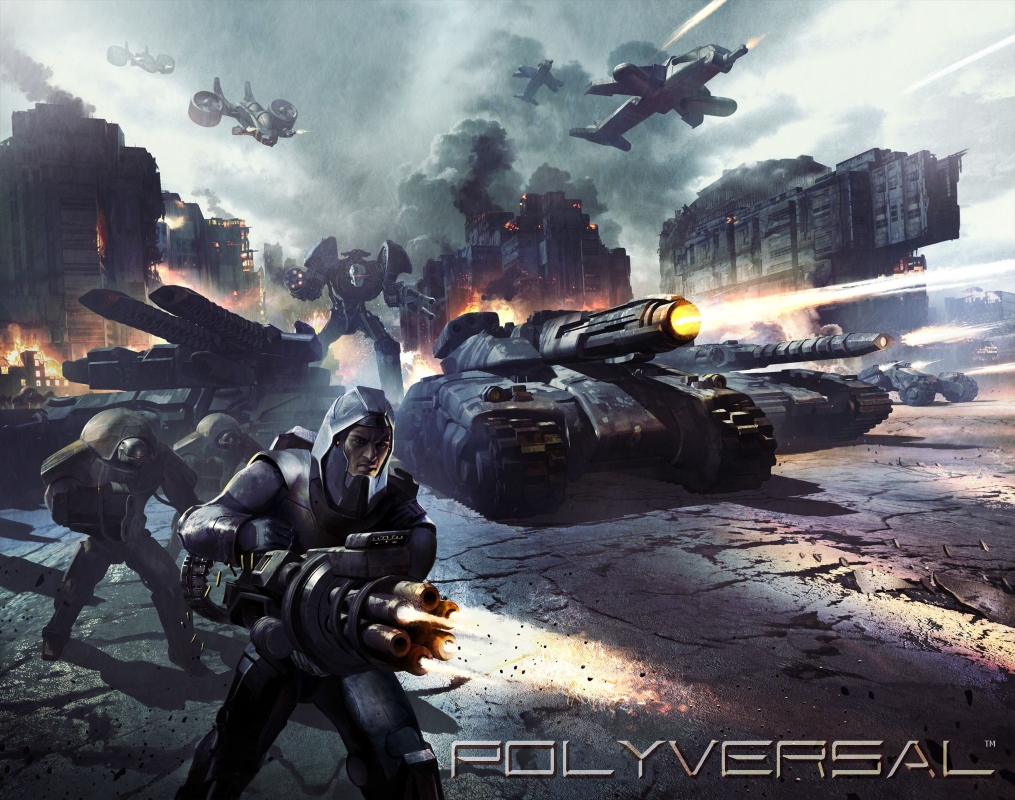Polyversal is a miniatures wargame that doesn’t require you to buy any miniatures. All images of the game on this page belong to Byron Collins, used here with his permission.
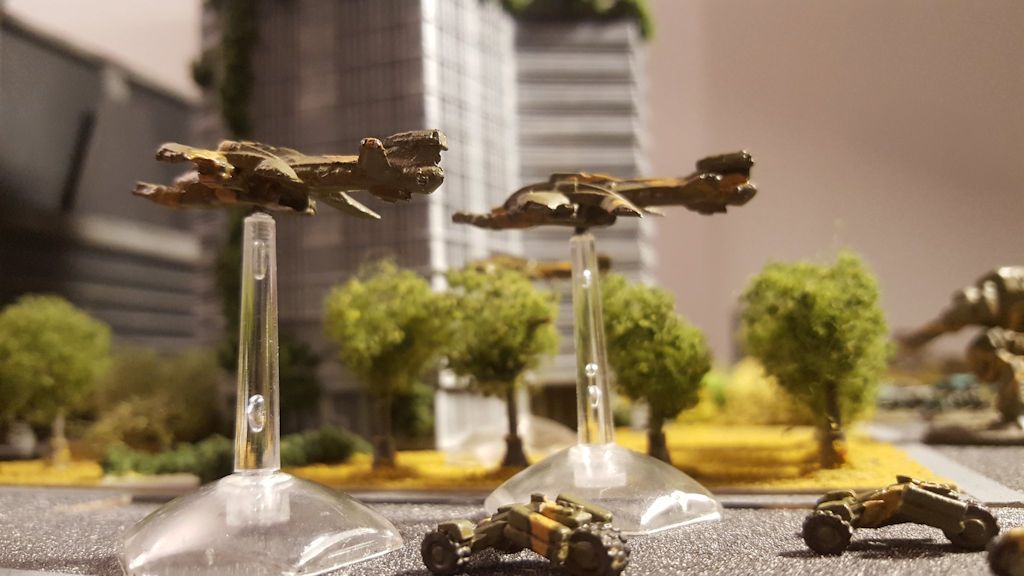
Here are the funding levels from his Nov 2022 Kickstarter, which raised $41k from 390 backers:
- $1: You get credit in the rulebook for supporting the game. 24 backers.
- $10: PDF copy of the rules. 127 backers.
- $45 + shipping: Printed rules, some dice, tokens, and quick reference cards. 56 backers.
- $75 + shipping: The physical bits above plus Combatant Tiles for 1 player’s faction. 30 backers.
- $110 + shipping: The physical bits above plus Combatant Tiles for 2 players’ factions. 57 backers.
- $175 + shipping: The physical bits above plus Combatant Tiles for 4 players’ factions. 36 backers.
- $210 + shipping: The physical bits above plus Combatant Tiles for 5 players’ factions. 58 backers.
NO MINIATURES. Well, you can add on miniatures, for $400-$1000 depending on the set of miniatures. Considering that the average pledge was $106, it’s clear that Byron sold plenty of miniatures. Yet backers didn’t have to buy this add-on.
Why waste backers’ money on creating more miniatures if they already have some?
Where do the miniatures come from?
And players in this market probably have lots of miniatures with huge table presence. So this is a Bring-Your-Own-Miniatures game (BYOM). Quite a few other miniatures wargames allow people to use their own miniatures, typically as long as they have appropriate scale. Polyversal, for example, is optimized for 6mm miniatures but will work with miniatures up to 15mm, and that flexibility is one of its hooks in this market.
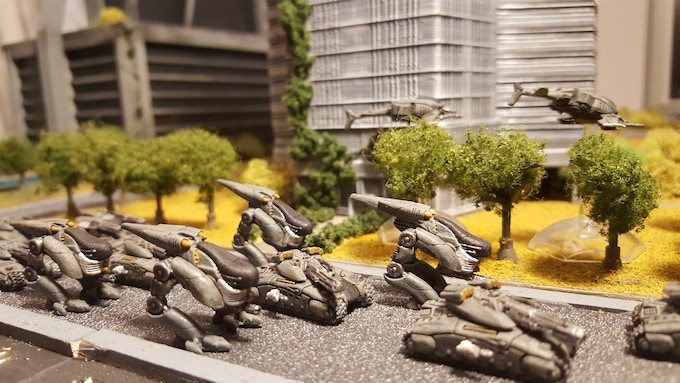
This means that players can use any style of miniature for the game. Fierce little armored infantry from Brigade Models that would visually fit perfectly in the 1900’s. Sleek sci-fi vehicles from Plasmablast Games that would fit in the 23rd Century. Dark Realm models of every type, perhaps customized and printed by the players themselves.
How to BYOM?
The question then becomes how to mechanically and thematically integrate disparate miniatures supplied by the players. The answer is Combatant Tiles. These tiles serve as a command center for the player, for tracking the stats and status of the miniatures of that type. These tiles constitute the bulk of the per-faction production costs reflected in the higher Kickstarter levels outlined above. In essence, these are what players are buying.
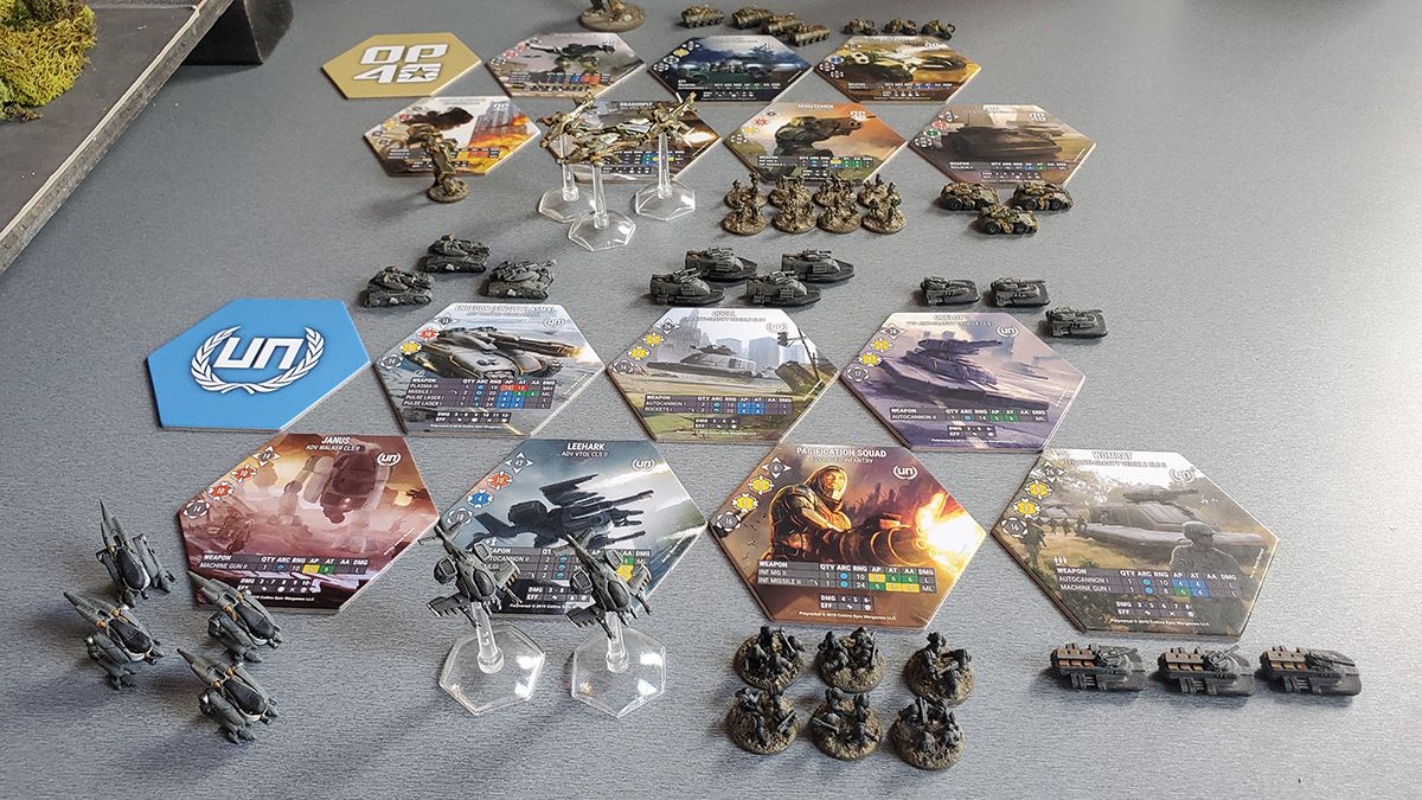
Players also have access to an online web application where they can design custom tiles. I haven’t found the webapp within the website, but I suppose players can upload photos of their own miniatures, tweak the design, and then print the tiles at home. As the number of people playing this ruleset grows beyond the 390 who backed the game, I imagine that Byron could someday make a little additional money by selling on-demand tile-printing services, so that people can upload photos of their miniatures, design tiles, and order printouts sent to their doors.
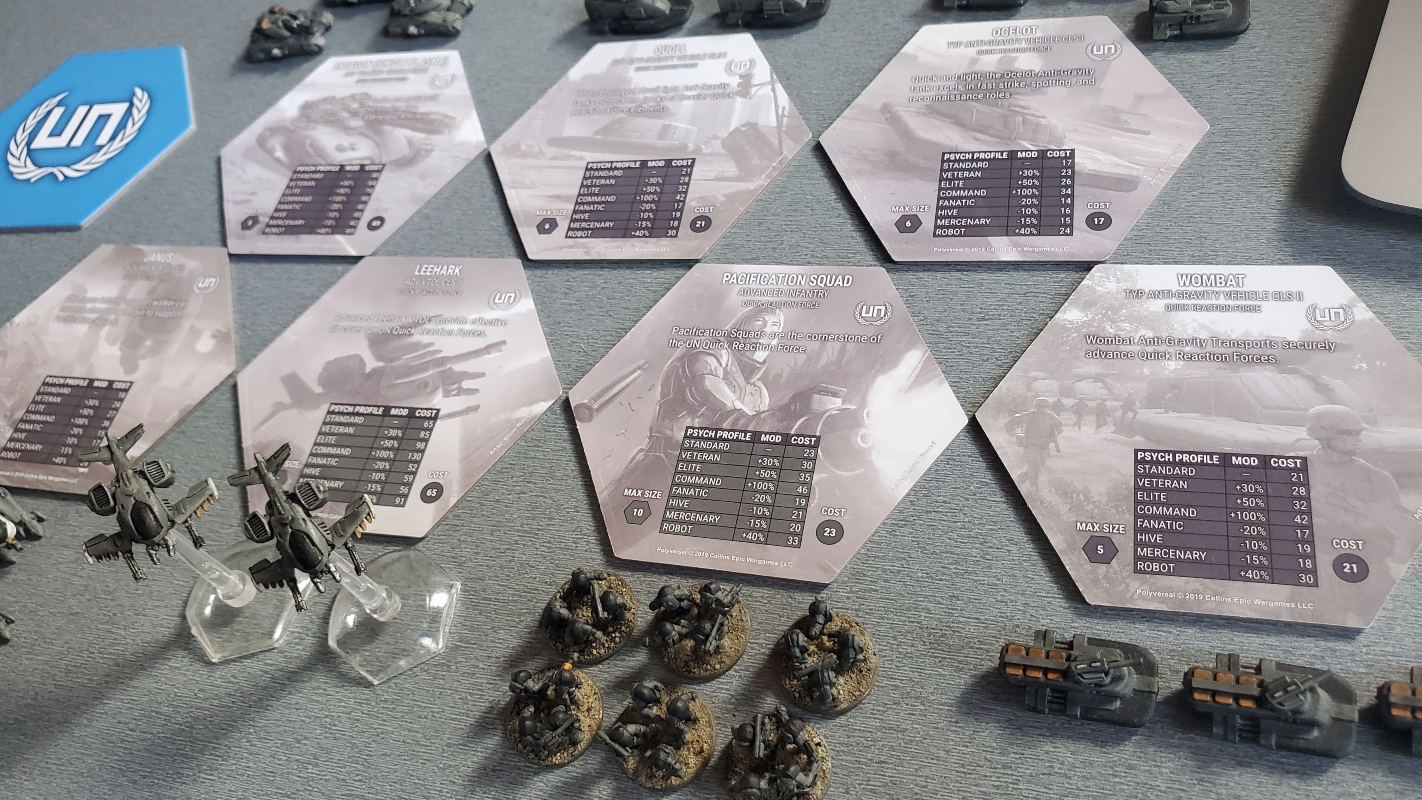
The other marketing advantage of this tile-design webapp is that it can get players to visit Byron’s website and learn more. For example, Byron could use this to market promos, expansions, free bonus content, etc.
BYOM for Euro Gaming
To tabletop wargamers, little of this article other than the Combatant Tiles would seem particularly surprising or novel.
To Euro gamers, however, our community has much to learn.
While Print-and-Play gamers have long practiced the art of repurposing pieces, most Eurogamers have a wall of shame Wall of Opportunity with shelves of games waiting to play. Many of these contain miniatures. Some of my favorites, for example, include the monsters of Lord of the Rings: Journeys through Middle Earth, the buildings of Tapestry, and the mechs of Scythe. Right now, BGG lists 1625 games with miniatures.
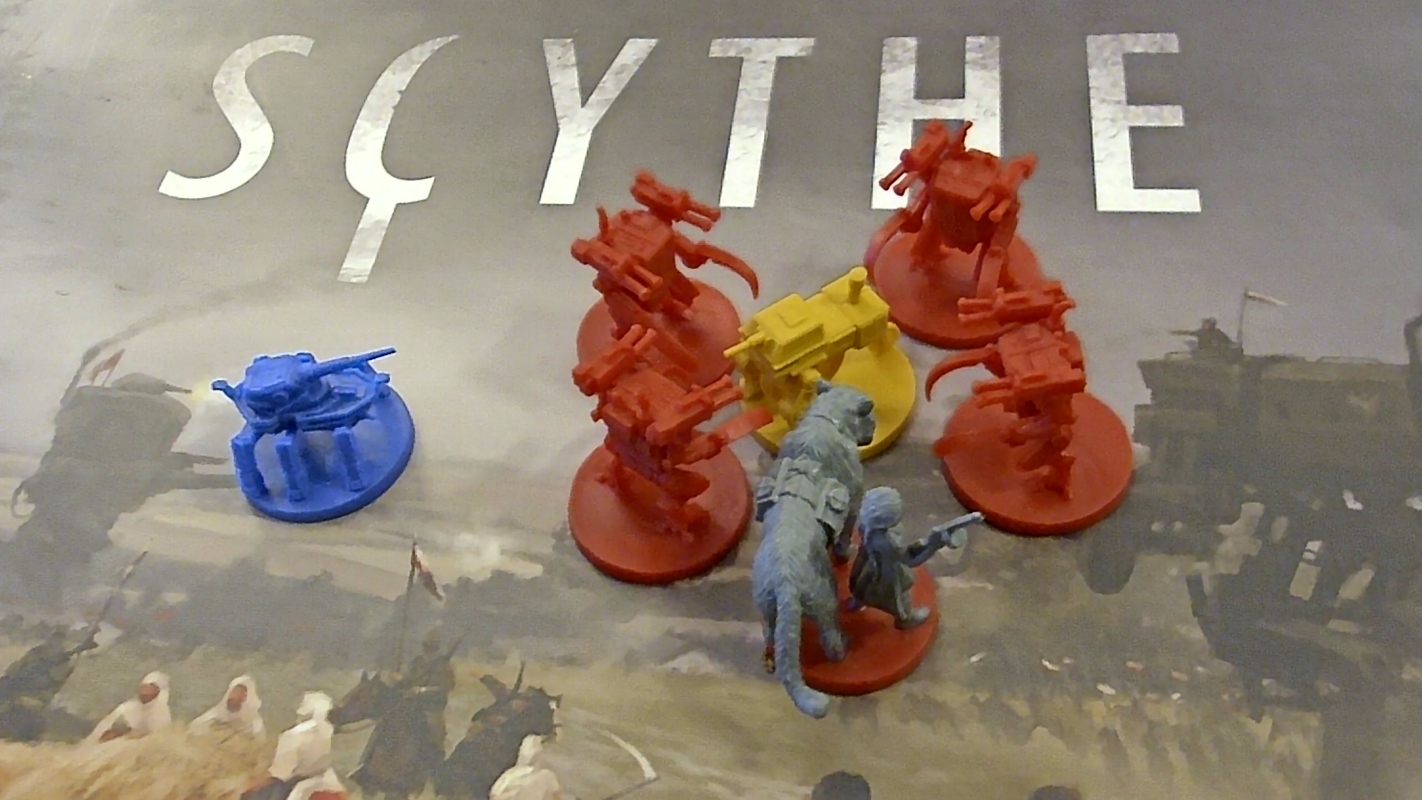
If only, if ONLY, a game designer were to create games that players could enjoy with the beauty of existing miniatures. If only somebody took the time to design games with other games’ existing miniatures in mind.
- Alas! For the ego (of the designer and the publisher) suggests that we must design something wholly new.
- Alas! For the profit motive of a publisher would quell the desire to design a game that repurposes another publisher’s miniatures.
- Alas! For a segment of this market would see this as a strike against the new game, in being not wholly new!
And yet it can be done
To which, I can only say: Ridiculous.
Byron shows you can Kickstart a game that allows people to BYOM. Over the past few decades, markets have developed for tabletop wargamers and RPG players. These markets offer extensive miniatures, many of which are incredibly detailed and heavily stylized. They are exceptional. And players have often lovingly painted these, or even customized the models before 3d-printing them.
So why don’t we start designing some games that offer players the option of repurposing these miniatures? That thought, in 2021 (sheesh, nearly 2 years ago) sparked my initial idea for Emblem.
Emblem’s conception
I had initially conceived of Emblem as a spin-off to Tapestry. Although Stonemaier preferred that I help design the expansion, and Emblem will thus not be a Stonemaier game, it doesn’t change the fact that Emblem’s prototype board is compatible with the 6 smallest buildings of the core Tapestry set. And, all of its income buildings are compatible with the income buildings of Tapestry.
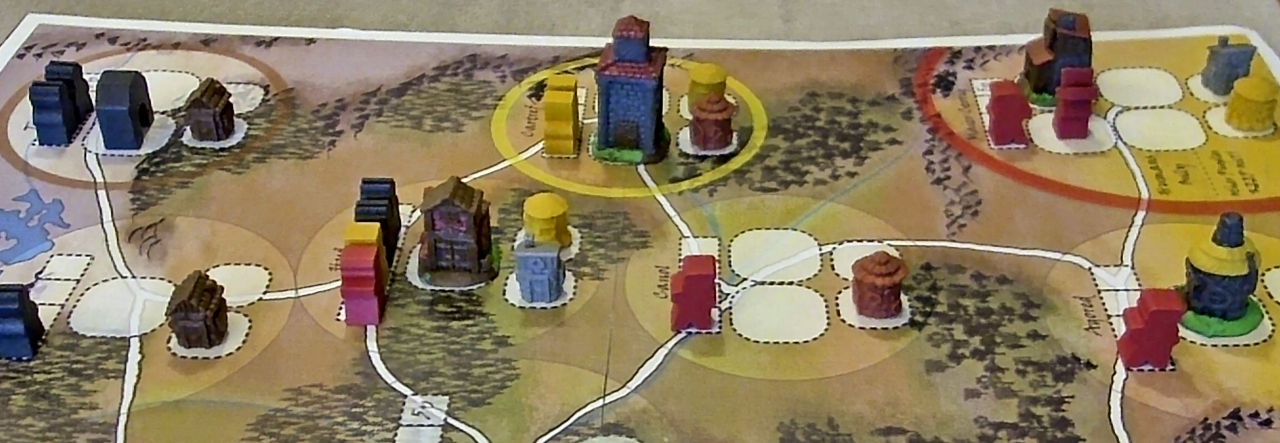
What that means is that when I kickstart Emblem (probably 2025, if all goes according to plan), then backers will have a few options:
- Print-and-play: For a few bucks, I send you the PDFs and STLs. You print and play using your own tokens and/or miniatures. For example, you can print the STLs to make miniatures. Or, you can play using miniatures from Tapestry.
- Board and cards: For more bucks, I send you the printed stuff. Again, you come up with your own tokens and/or miniatures. But you don’t have to print anything. I haven’t decided if this should include a box.
- Standard version: For even more bucks, you get everything that you need to play. This includes a box, printed stuff and tokens, including big tokens (not miniatures) to represent the buildings.
- Deluxe version: For an unreasonable number of bucks, you get the standard version, but it includes custom 3d miniatures instead of tokens. I would probably only offer 100 copies of this.
Cartref as a test case
Cartref, which I anticipate Kickstarting later in 2023, is my test case for this model. One of my design goals was to create a game that looks good using Tapestry’s income buildings. The prototype is coming along just fine, I’d say.
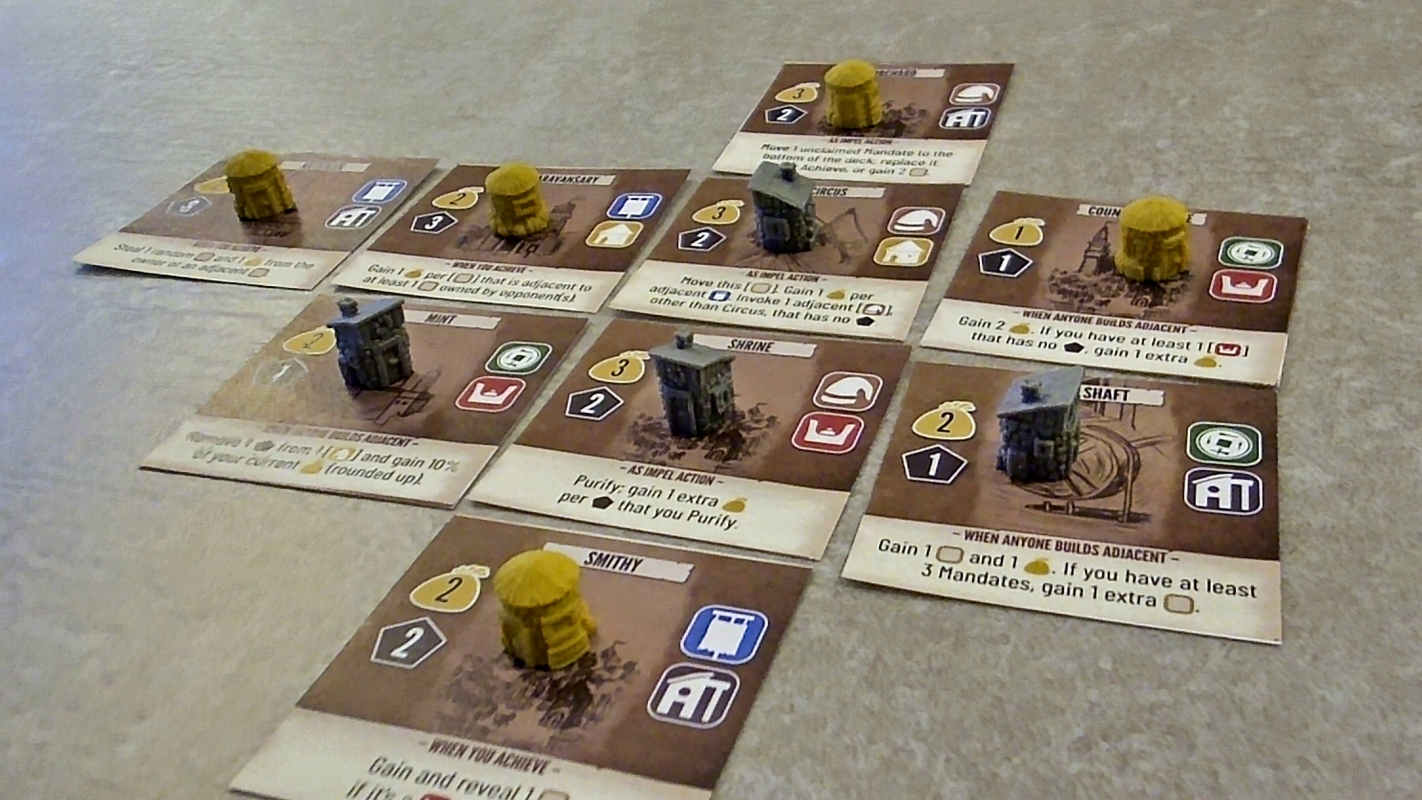
Kickstarting Cartref with PNP-cards-standard-deluxe levels will allow me to answer a few questions, within my own audience:
- What proportions prefer: printing their own cards vs buying cards?
- What proportions prefer: stock building tokens vs miniatures?
- Among the latter, what proportions prefer: printing their miniatures, repurposing Tapestry miniatures, or buying new miniatures?
- Do photos of the game with stock buildings generate as much engagement as photos with miniatures?
So now everyone needs a copy of Tapestry?
No, you can play Cartref and Emblem with tokens. Or you can buy some miniatures that I anticipate supplying.
But, yeah, you really do need a copy of Tapestry, even if you don’t ever play Cartref or Emblem. Because Tapestry is that good of a game, either with or without expansions.
Notes to self
- Polyversal’s webapp and custom PNP-able Combatant Tiles provide the glue between arbitrary components and the game.
- How to integrate that idea more fully into Emblem or other games?
- Keep eyes open for other Euros that allow players to repurpose miniatures. Do they only draw upon the same publisher’s line of games? Or are their publishers interested in this broader idea?
- Long-term: Registry of miniatures (catalogued by type and game) to facilitate design and reuse.
